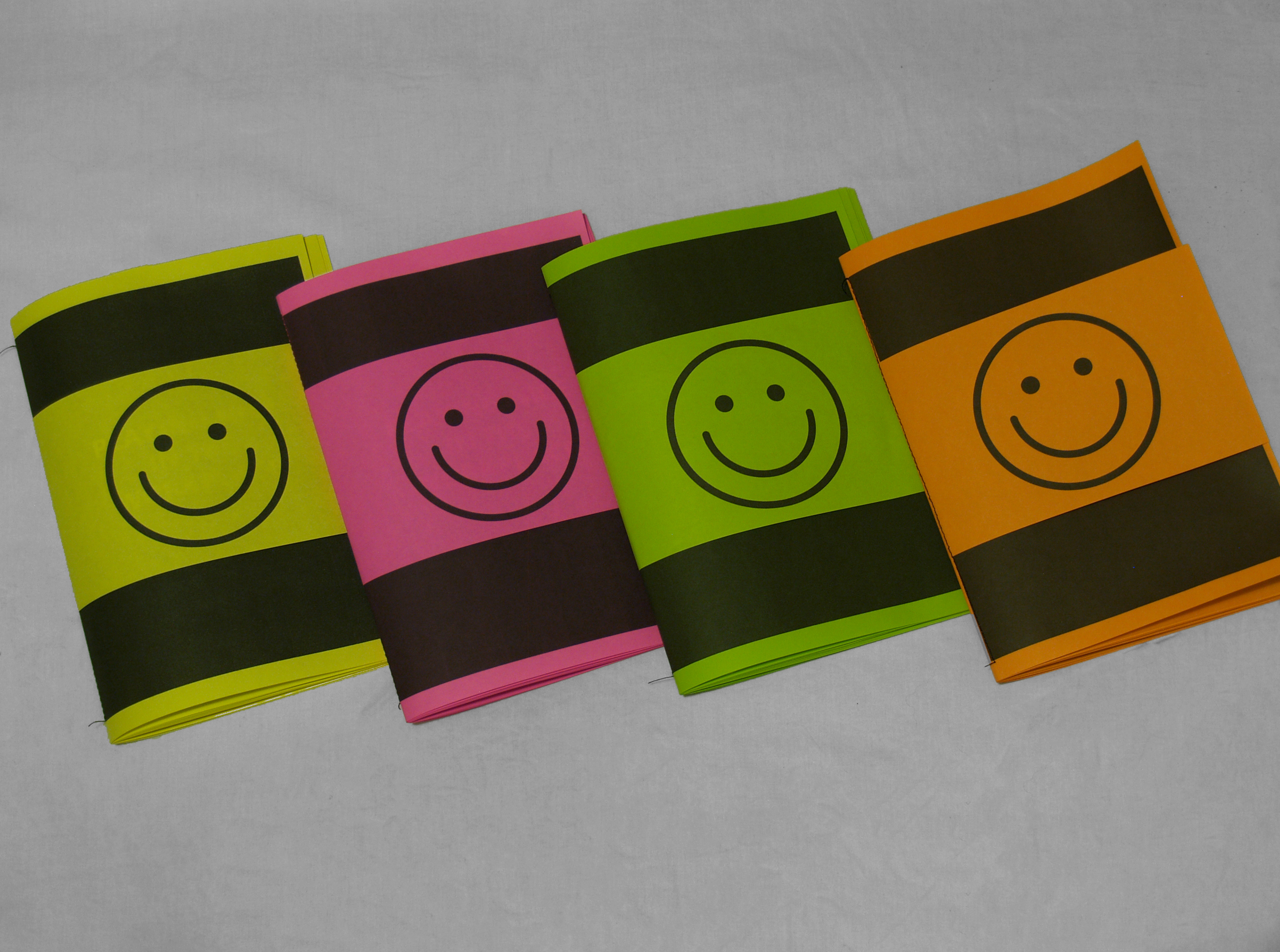Playing nice in the workplace
by theresamoso
This work has been commented by 1 curator(s). Read the comments
Title
Playing nice in the workplace
Headline
Is dialogue lost through emotional labour?
Concept author(s)
Theresa Moso
Concept author year(s) of birth
1990
Concept author(s) contribution
Contributed 100% towards concept
Concept author(s) Country
Australia
Friendly Competition
Radical intimacies: dialogue in our times (2014)
Competition category
Visual communication practice
Competition subcategory
static
Competition field
academic
Competition subfield
student
Subfield description
Swinburne University of Technology
Check out the Radical intimacies: dialogue in our times 2014 outlines of Memefest Friendly competition.
Description of idea
Describe your idea and concept of your work in relation to the festival outlines:
I will be exploring how standardized language structures economic productivity and how it manages emotional labour in retail positions. Emotional labour was first defined by sociologist Arlie Hochschild as "the management of feeling to create a publicly observable facial and bodily display."
Due to the affect of standardized language in labour, speech patterns have become common and the differences in dialogue between the customer and employee is usually one sided. Questions and statements to customers such as “Hi, how are you today?” and “Thanks, have a good day” can be heard throughout retail stores around the world. This standardized language has created the notion of retail workers as robots, or as all the same person, as this dialogue is used constantly in retail with customers becoming annoyed with the repetitive gesture.
Dialogue between employees and customers are distant, as emotional labour has designed the workers identity as constantly being happy and polite to provide good customer service. Employees are usually trained to manage their emotions becoming less singular in their actions. Dialogue is lost as emotional labour creates a communication barrier between the customer and employee to maintain the face of the company.
What kind of communication approach do you use?
I will create a zine (self-published, small-circulation, often non-profit publications), which will explore emotional labour and its affect on dialogue between the workers and customers. Managing emotions is a major role played out in retail and the zine will help communicate true emotions felt by employers. This will be communicated through tales of customers from retail employees. The stories will describe situations where the employee has had a positive or negative connection with the customer. I have decided to use a zine as my format as they have an intimate personal transaction between people. Bright, fluro paper will be used to enhance attraction to the audience, with black ink to uphold the zine culture. The zine will emphasize on what retail employees wish they could communicate to customers but can’t due to emotional labour impacting on their behaviour. The zine is targeted towards the age group of 18-32 who work in service-orientated roles such as retail and hospitality. It is also targeted to fans of zines, zine collectors and those with a sense of humour and are empathetic to the subject.
What are in your opinion concrete benefits to the society because of your communication?
The zine creates awareness towards the public sphere by educating them on emotional labour and how this has an impact on their connection with retail workers. It communicates the issue of retail workers suppressing their emotions towards customers as they are sometimes forced to put on an act to provide good customer service. The approach of the zine is light and sassy to maintain a semi-casual language portrayed in a retail environment. The tales from retail are told in a direct manner, explaining the stories as it happened with no holding back of emotions.
What did you personally learn from creating your submitted work?
From creating this work, I learnt a lot about emotional labour and standardised language in labour. I have worked in retail for nearly 10 years and I have never understood the reason behind company’s rules for retail workers actions with customers until now. I was aware of retail workers having a certain personality – more caring and friendly, but I did not know the extent emotional labour could have on the workers actions and health. I also learnt a lot about zine making and zine culture. I was surprised to see in my research that a large zine culture exists around the world and that print is definitely not dying. The more I researched about zine history and culture, the more interested I was in the idea. I have a big passion for DIY and I felt that this format was perfect with the notion of radical intimacy. Creating a zine and putting everything together myself from designing, printing and binding adds a personal touch to the final outcome enhancing the intimate connection to the audience.
Why is your work, GOOD communication WORK?
My work is good communication because it aims to educate, inform and connect with the audience through a small zine that is easily available and eye-catching to the audience. The visual language of the design is contemporary, mixed with DIY aspects relevant to the target audience.
Where and how do you intent do implement your work?
The zine will initially be for free at intimate settings such as coffee shops, bookstores and newspaper stands. A bundle of zines will be delivered to these settings for the target audience to grab a copy. The zine will also be showcased during zine markets and festivals as well as zine stores such as The Sticky Institute in Melbourne.
Did your intervention had an effect on other Media. If yes, describe the effect? (Has other media reported on it- how? Were you able to change other media with your work- how?)
No
Curators Comments

Kevin Yuen Kit Lo
successful in showing the impact of standardized language on personal interaction.
Very strong message, and enlightening content as it renders visible how day to day dialogue is framed within the service industry. It is clear that the power relations at play within such a controlled environment limit the space within which we can interact. It is an interesting perspective on a topic we tend to see as anodine and it allows us to re-envision the importance of activities in which we often partake mindlessly. The zine opens up a space to discuss how this problematic situation could be improved.
In a way, your zine presents a simple solution to the problem, but, if you were to continue developing the project, I would include a wider discussion of the notions of commodification of human through labour and the impact of corporate culture on how we perceive retail employees. You introduce the topic in your explanatory text by stating that “the standardized language has created the notion of retail workers as robots,” thus a form of dehumanization, but the artwork itself lacks in the development of this idea and the solution proposed somewhat limits the possible range of the discussion. Your work could benefit from this addition as it would widen its impact by raising awareness of the many politics at work within our everyday interactions. It would turn the glance of your readers away from themselves and back to the power dynamics at play in their day-to-day encounters. This focus could have a greater social impact as it would allow your readers to see the extent to which they are affected by the standardized language described.
Concerning the visual aspect, I appreciate the simplicity and lightness of your design. It is straight forward and enticing, good characteristics for a project that deals with theoretical content. I also think the idea of using expressive typography is very relevant to the context of your work. The typographic interventions have the potential to introduce a powerful poetic dimension to your work. However, I wonder if all of the treatments chosen add to the discussion and if they were pushed enough for them to achieve an optimal impact. While the concept is strong, some interventions could be more communicative. For example, an actual handwriting could have served your purpose better than a typeface that mimics its characteristics. Effectively, the hand made allows for the introduction of an intimate and fluid form of expression within an environment otherwise very structured and mechanical, a connotation that matches well with your topic, but part of the message is obliterated by the chosen typeface, which only hints to these ideas. Always ask yourself how does this add to the message, is it necessary, and if so, how can i make my visual interventions more communicative and relevant.
Good work!




















